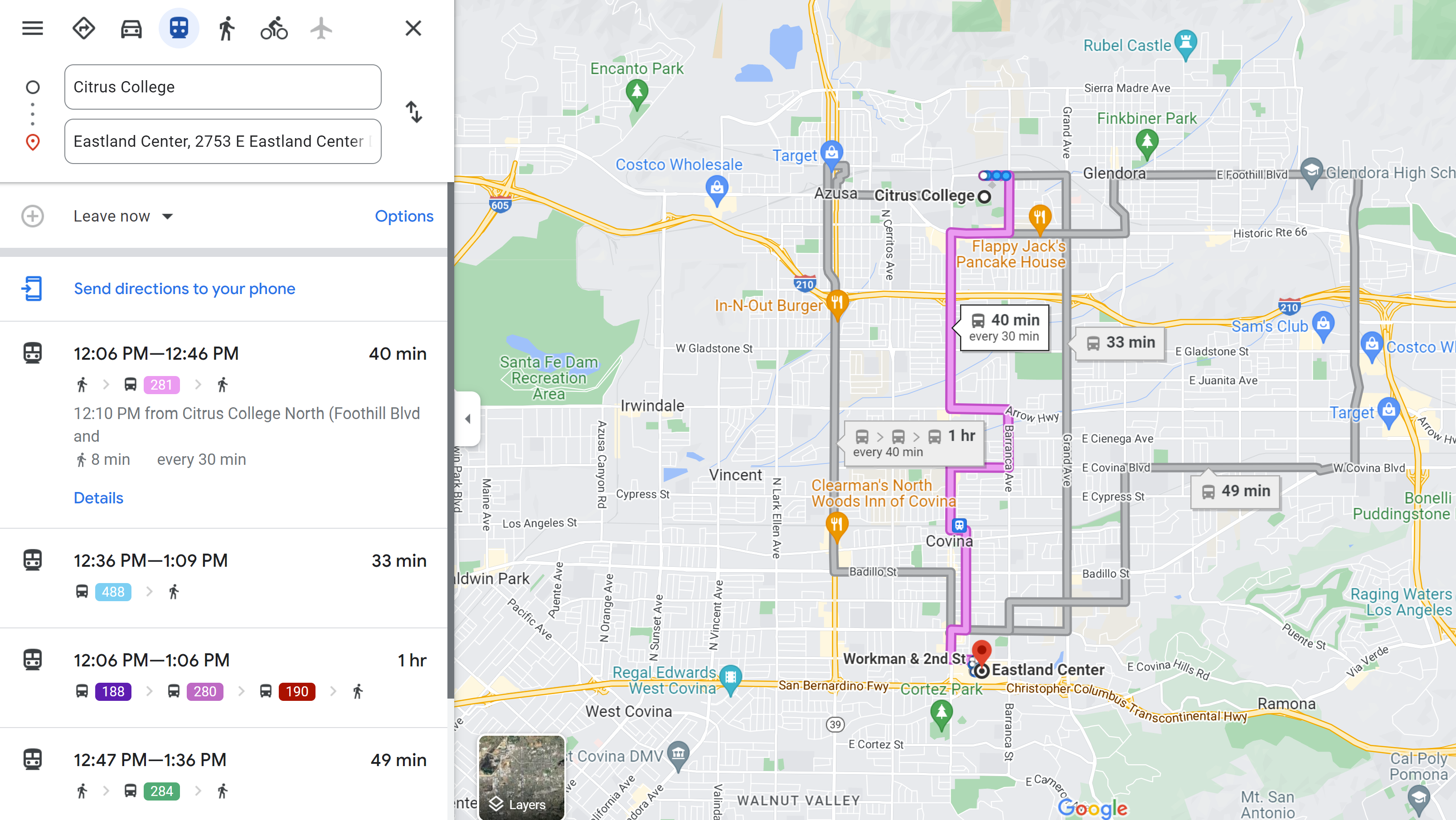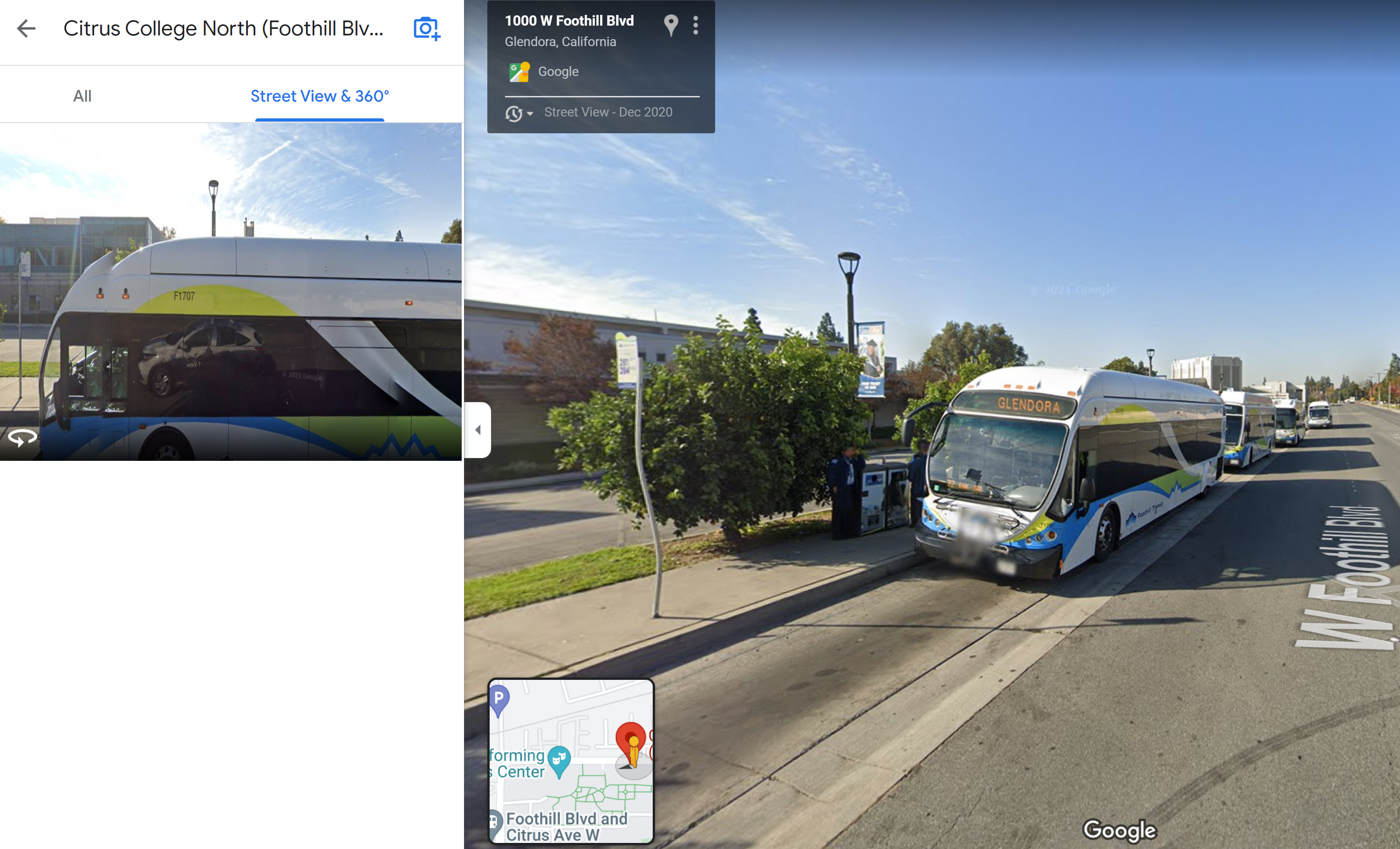Feeling overwhelmed on the bus
Using public transit can be especially challenging if you have autism, issues with planning and memory, sensory needs, communication barriers, or anxiety. A little preparation can be very helpful. These tips for riding public transportation come from a publication of the Center on Secondary Education for Students with ASD (CSESA).
Reduce uncertainty
Plan your trip ahead of time.
There are several ways to plan your trip. You can use an online or app-based tool, like Google Maps or the Metro trip planner. We also have representatives who can help you. You can call them at 800-RIDE-INFO (743-3463) or visit them in person at one of our Transit Stores.
Write out each step.
You can find a photo of your bus stop and what’s around it by using Street View on Google Maps. There are also many photos and videos of our buses that customers have tagged us in on Instagram: https://www.instagram.com/foothilltransit/tagged/.
Consider the "what ifs".
In your plan, decide what you will do if the bus is late or if you miss it, how you will recognize your correct stop, and what you will say if you get lost. You can see where your bus is in real-time on our schedule pages or using our real-time information tool on your phone. You can also get arrival predictions using transit apps or you can text FT + your bus stop number to 321123. (For example, if your stop no. is 1770, text FT1770 to 321123.) The bus stop number is shown at the bottom of the bus stop sign.
Make a Plan B.
Create a plan for alternate routes in case you get lost or get off the bus at the wrong stop. When you board the bus, you can ask your bus driver if they can warn you when you’re approaching the stop where you want to get off.
Create a social story plan.
Plan your behavior on the bus. Consider voice level, staying seated, personal space, stowing items and how to interact with the bus driver or other riders if help is needed. We have some behavioral expectations for everyone on board. You can review them in our Bus Basics. Here are some social stories about riding the bus to get you started, but keep in mind that some of the details will be different for different transit agencies.
Practice the route.
Practice with someone familiar until it is comfortable to do it alone.
Manage sensory input
Wear headphones.
Headphones can help you manage the noise level. They can also signal to others that you would prefer not to chat.
Focus on something you like.
Listen to music or read a book to keep calm and relaxed. Carry a special object that provides comfort, helps reduce sensory overload, or masks smells.
Travel at quiet times.
Aim to travel when it is less crowded. This is usually on weekends and the middle of the day between morning and evening commute, but you can ask us for specifics if you’d like. If the regular bus looks too full, consider waiting for the next one.
Let us know if you have any tips that make riding the bus easier for you!


